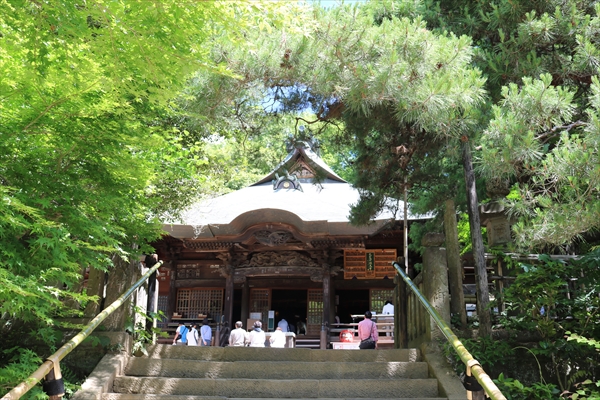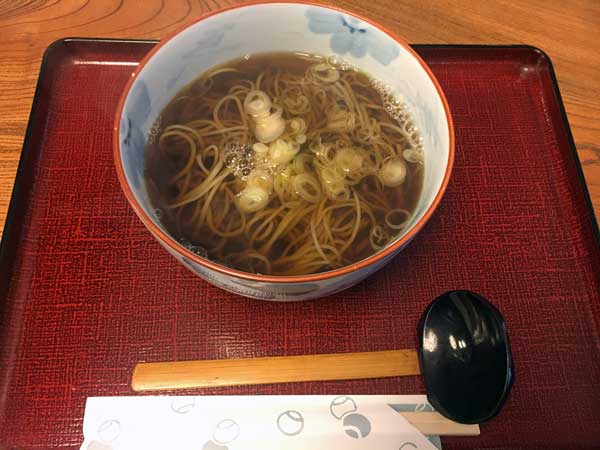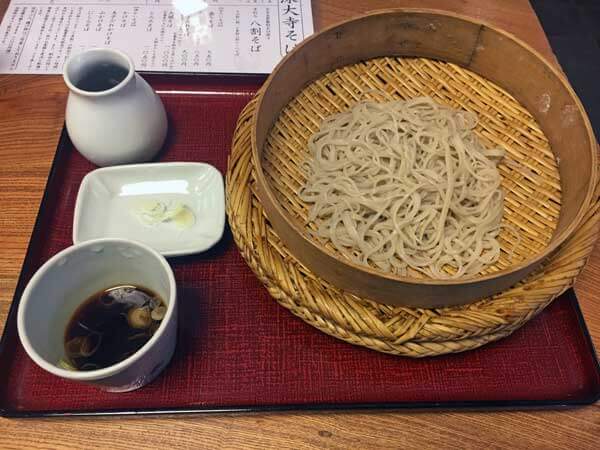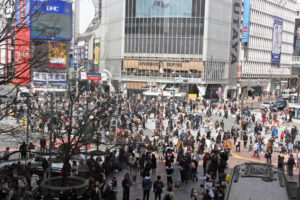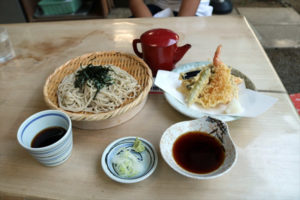Jindaiji temple is one of the best valuable places around Tokyo. Especially, if you are in Tokyo at the begging of March, you will see Darma Doll festival in Jindaiji temple and you will absolutely have very impressive memories.
Contents
What is Jindai-ji Temple(深大寺)?
Jindaiji is the second oldest temple in Tokyo. It is in the western part of Tokyo (Tama Area) taking 40 minites from mid central of Tokyo by train and bus. There are not so many foreign tourists usually. But more than 60,000 people visit every year during Dharma Doll fair for two days = 03 & 04 March.

The approach to the main building of temple. The history of the temple is about 1,300 years ago (733 AD). It have been repaired over and over again until today.

Access to Jindaiji
| The location | 〒182-0017 5-15-1, Jindaijimotomachi, Chofu-shi, Tokyo TEL 042-486-5511 |
|---|---|
| Website | English / Chinese(中国語) |
Bus is from Keio Line Chofu Station(調布) bound for “Kichijoji Station” or “to Mitaka Station”.
It takes about 10 minutes to nearest bus stop from Chofu station. Nearest bus stop is [JINDAIJI] or [JINDAIJI elementay school (pronounced as JINDAIJI SHO GAKKO in Japanese].
Chofu city is located in the central part of grand Tokyo, in the southeastern part of Tama district. It is outside of Tokyo’s 23 wards(mid Tokyo) most popular for tourists, but it is good access from the mid of Tokyo, Shinjuku(新宿),Shibuya(渋谷).
It is about 15 – 20 minutes by train from Shinjuku station in central Tokyo. Very good access !!
It is possible to visit enough if there is half a day from central Tokyo!!
It is also possible to go by public bus from JR-LINE [KICHIJOJI(吉祥寺)] station.
[KICHIJOJI(吉祥寺)] is also a nice place located in very convenient place, in the southeastern part of Tama district. It is outside of Tokyo’s 23 wards(mid Tokyo). It is about 15 – 20 minutes by train from Shinjuku station by JR-LINE and 30 minutes from Tokyo station.
Basically Chofu station is better as a gate station but I recommend which to use depending on where you are before visit.
What to do①:Find real local life and nature in the suburbs of Tokyo
You will feel the real natural features and local people’s life in the suburbs of Tokyo here.
The atmosphere of 200 years ago (Edo-period) is still remained. You will find the unique nature (green, clean natural water). These feature are different from the central Tokyo (23wards).


What to do②:Enjoy local traditional food “Jindai-ji Soba noodle”
Jindaiji temple is famous for its Soba (buckwheat noodles). It is the place where many of historical great figures stopped by to fill their stomach in Edo-period (200 years ago). There are still more than 25 Soba restaurants in and around the temple. Tourists are looking forward to eating Jindaiji Soba noodle.
|
What is Soba ? Soba is Buckwheat noodles, the most popular varieties of Japanese noodles. It is made by mixing buckwheat flour with water and wheat flour, kneading it, spreading it out thinly and cutting it into long thin noodles. |

▲Hot soba noodle
▲Cold soba noodle
More about JINDAIJI soba▽
What to do③:Touch a Japanese traditional art experience – ceramics arts
You can enjoy making Japanese traditional ceramics with cheaper price. They offer more than 100 kinds of unglazed baked goods such as bowls, plates and figurines. After choosing your favorite unglaze, challenge to paint with 10 color paints! Once completed, the staff will take care of them and bake them with glaze. Why do not you enjoy the scent of Japanese harmony in the nostalgic shop ? The firing time is very short, 20 minutes, so it is OK to take it during that day. (30minutes / 900JPY (8us$,6euro)~depending on Unglazed goods)


What to do④:Try natural hot spring at “Yumori-no-sato”
How about natural hot spring after you visited Jindaiji temple. It’s 6-7minites walk from the temple. You will see the very unique color of spring water. This brown color hot water made of “humic acidis”, very rare color all over Japan.
There are a small Japanese food restaurant and resting lounge in the Japanese traditional style building.
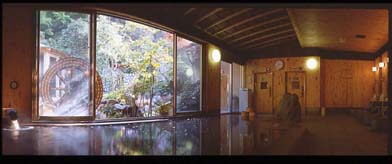
Photo source : Official website http://www.yumorinosato.com/contents/facility/spa/
| OPEN 10:00~22:00 CLOSE None (but rarely closed due to special maintenance) Price : 500- 1100 JPY depeding on time and date and length of stay.Information in English |
What to do⑤:See Japanese unique special events (Traditional)
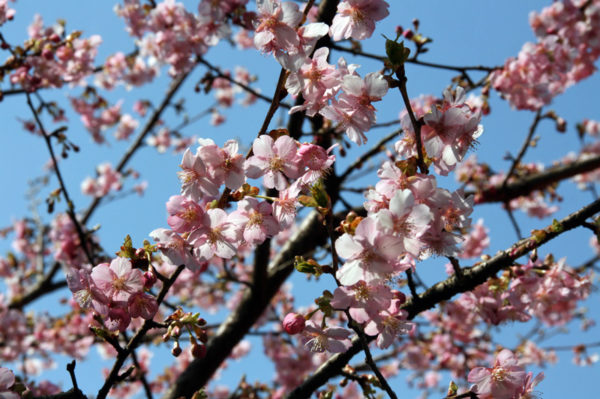
In early March. Signs of spring are emerging in Tokyo. The cherry blossoms are preparing for blooming. About one more month, we will see the full bloom.
There are 7 times traditional and religious events in Jindaiji (Jan, Feb, March, May, Oct). These are all very unique here. Event will be special memory.
What to do⑥:Dharma Dolls Festival 03&04 March every year
Early March every year, Dharma Dolls Fair (Dharma-ichi) is held. This is one of the three major Dharma Fairs in Japan. It has been loved as a seasonal event since Edo period, more than 300 years history.
| What is ”Daruma” ? Red dolls in the pictures are “Dharma”. Briefly speaking, ”Dharma” is a traditional Japanese doll representing Bodhidharma. Dharma dolls always rise after falling down. The people buy Dharma pray for warding off evil and for accomplishment of all wishes. There are many Dharma dolls in a row in the precincts and around the gates of the temple. |


Usually, when they buy a Dharma, they write a black dot (eyeball) in one eye. And when the wish is satisfied, fill with the black eyeball in the other eye and dedicate to the temple.
However, in Jindaiji the customs are quite different.
If you wish, the monk writes the Chinese character “Ah (阿)” in the left eye instead of a black dot (eyeball). This is the word that replaced Sanskrit word (梵語) of India with kanji. India is the Birthplace (origin) of Buddhism. It is a language unique to Japanese Buddhism.
If the people’s wish come true or passed the year, they fullfilll the other side of eyes with the character “Um (吽)“. which means “Yeah” but pronounce “Um”.
“Ah (Ah)” corresponds to A of the alphabet. “Um (吽)“ corresponds to Z of the alphabet. In other words, these two characters mean the symbol of “the Root of all things” or “They have a good chemistry(harmonized)”.


Size of Dharma dolls is various, big and small. Prices range is from around 1000 JPY(10us$、7euro) to as much as 10,000 JPY (100us$,75euro) if it is big.
Doll’s face is also different !! They will try to find a face similar to themselves !!!


When it is a festival in Japan, stalls(outdoor stand shops) are always out. They sell food and playing toys with children.
Children enjoy games of goldfish scoops and toys wide. Everyone of the Japanese has a memory that they enjoyed the festival game with their children, brought by their parents.Such a landscape is very nostalgic but still now.
Many of the masks are of animated characters, unique in Japan


